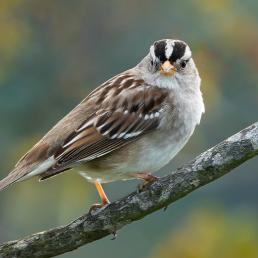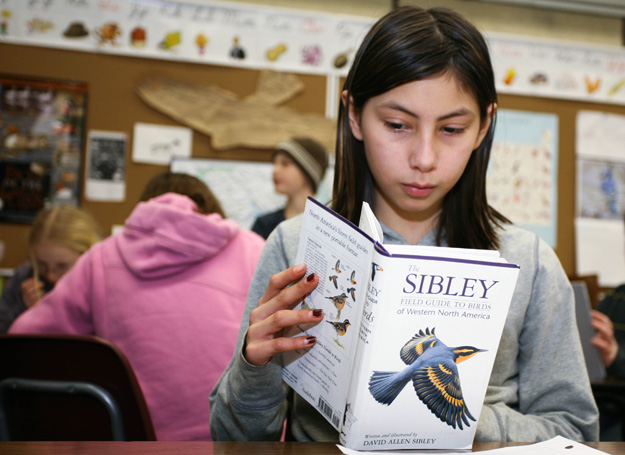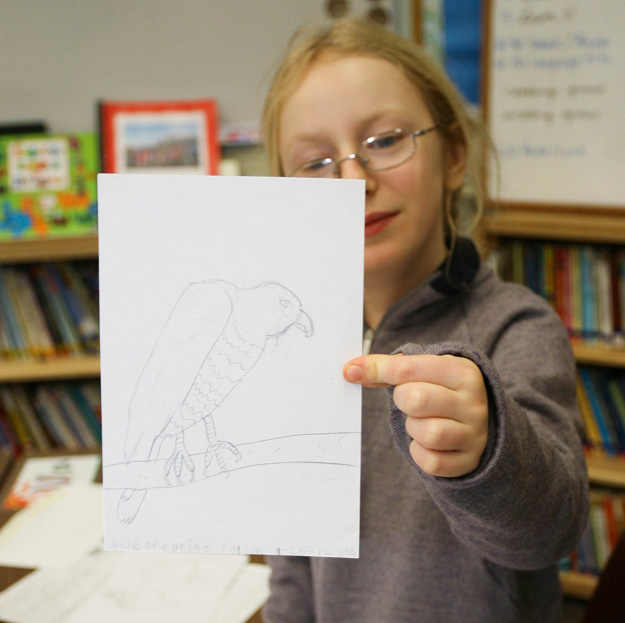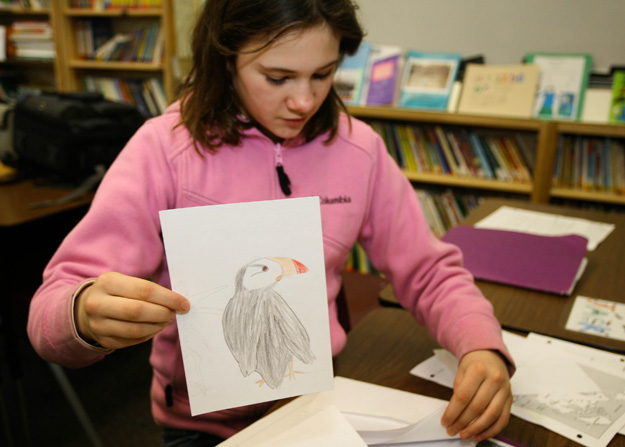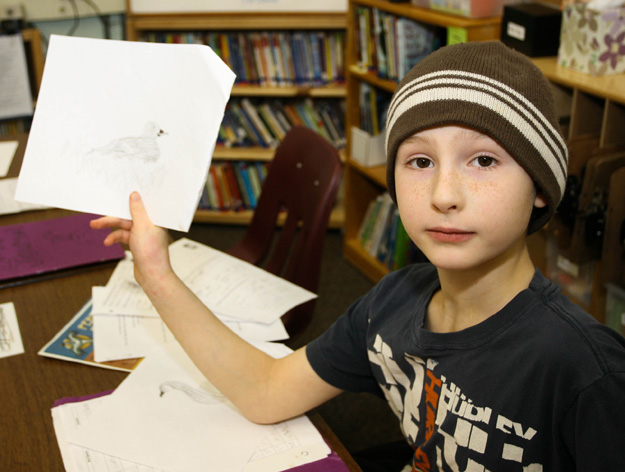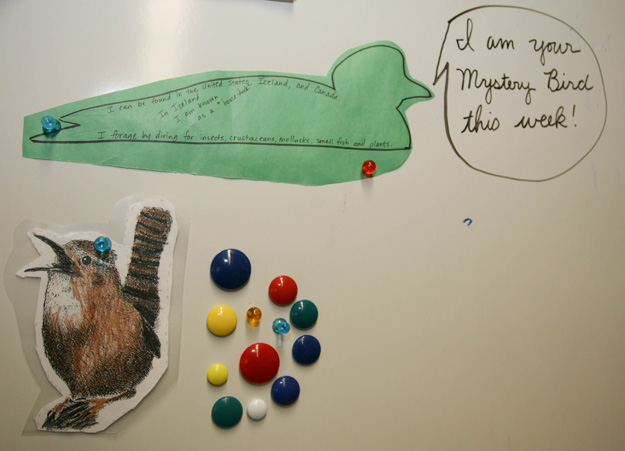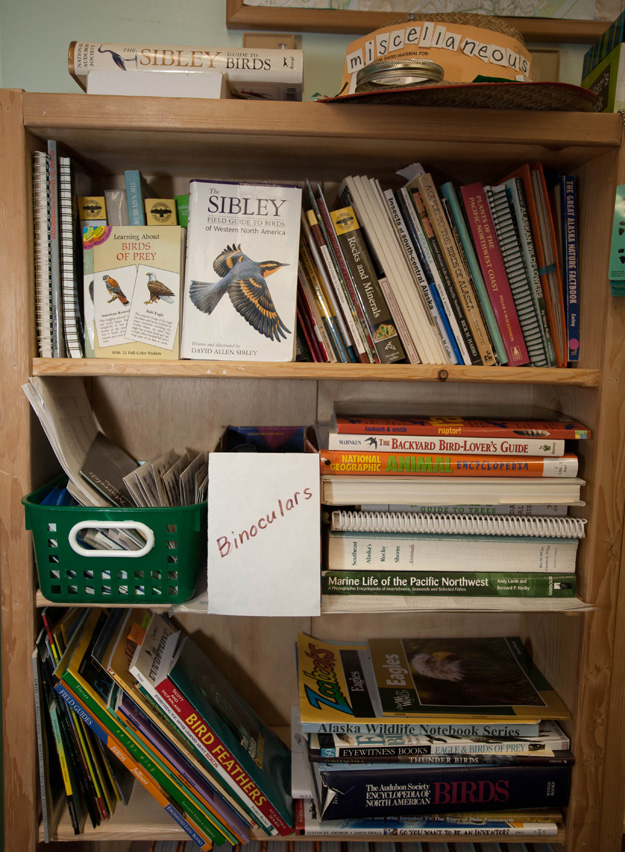

Join BirdNote tomorrow, November 30th!
Illustrator David Sibley and actor H. Jon Benjamin will face off in the bird illustration battle of the century during BirdNote's Year-end Celebration and Auction!
Research Alaskan birds with facts, fun, field trips.
A year-long project for grades 4 and 5
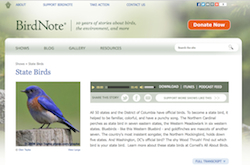 | 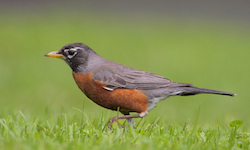 | 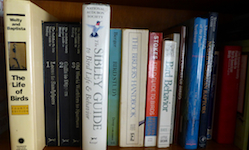 | ||
| Summary | Lesson Plan | Resources |
Summary
Jessie Soder works with her students in Gustavus, Alaska, to build awareness of birds and nature throughout the school year. Each student researches approximately ten Alaskan bird species and writes detailed notes about appearance, range, habitat, nesting behavior, breeding behavior, and three "fun facts." The students' research will be published in a book of Alaska birds at the end of the school year. Students must use at least two resources, and Jessie reports that BirdNote is a student favorite! Students also undertake a year-long study, where they collect data at specific sites to test a hypothesis. All field trips are summarized on the class blog. The students also keep a checklist of the species they see throughout the school year. Once students correctly identify 50 species, they can apply for a certificate from the Wings Over Alaska program of the Alaska Department of Fish and Game.
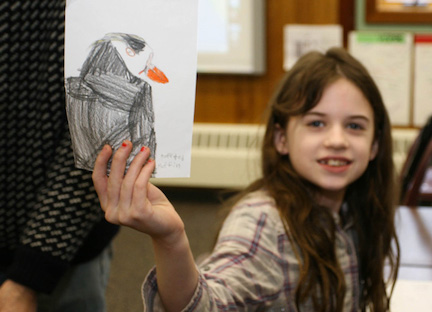
Title: Birds of Alaska
Duration: Year-long but scalable
Setting: Indoors and outdoors
Subject Areas: Living Environment, Life Science, Language Arts, Speaking & Listening
Grade Level: Grades 4-5
Lesson Objectives:
• Students will keep a checklist of species seen throughout the school year.
• Students will collect data to test a specific hypothesis.
• Students will research natural history of Alaska birds and contribute to a book that will be published.
How BirdNote is used: listen to shows and visit website to learn about Alaskan birds
Materials: access to computers for research, mammals and birds checklist, field guides, field trip data sheet, bird book note-taking sheet, Wings over Alaska birding application
Lesson Plan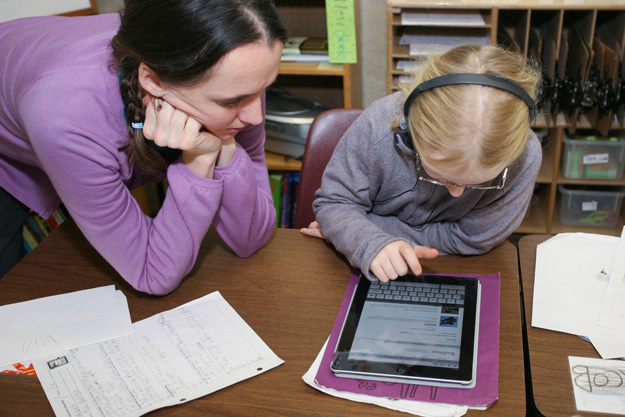
Year-long research project
Students brainstorm to determine the topic of their year-long study. For example, during the 2012-13 school year, Jessie's class decided to test this hypothesis: We think that the conifer-dominated forest will have the most animals in it because it provides a wider variety of food, water, and shelter, which makes it so that a wider variety of animals live there.
The hypothesis and methods document captures this question and explains our methods for collecting data.
Students use a data collection sheet during field trips. A total of 14 species of mammals, including wolf, bear, mink, and weasel, and 23 species of birds -- such as grouse, raven, Bald Eagle, and Northern Goshawk -- are included, with space for notes.
Jessie explains: "After every field trip, we post a field report, photos, and more. My classes have been doing year-long scientific studies for the past five years. This is the first year that birds have been integrated. In past years, students have studied plants, soil, fresh water, salt water, the intertidal zone, and our local watershed." Visit the Gustavus Field Trip Blog.
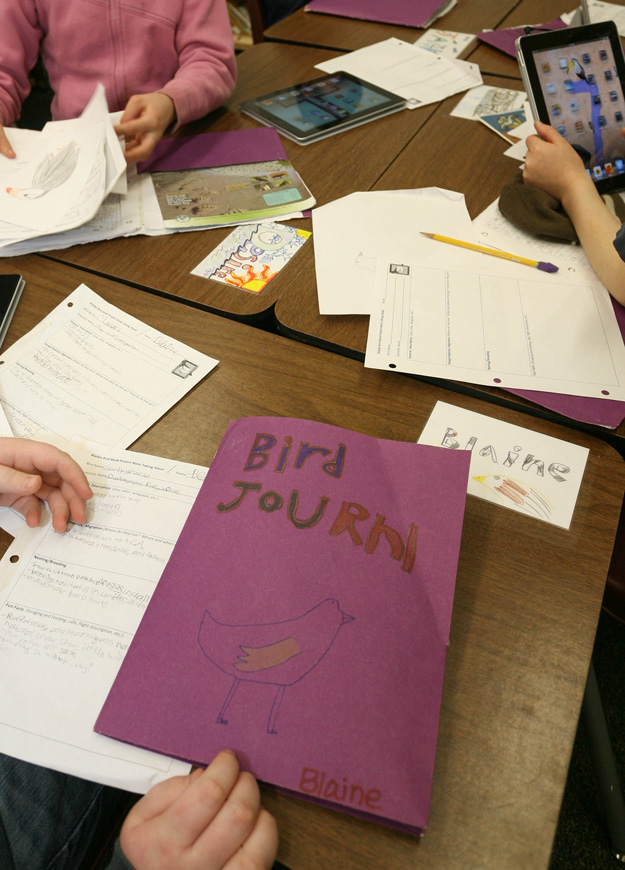 Bird Book Project
Bird Book Project
The bird book project gives students the opportunity to publish detailed research on at least two species from five different categories: seabirds, shorebirds, birds of prey, waterfowl, and songbirds. Each species must occur in Alaska, and each species description must include an illustration (with color) and details about natural history. Students gather data using the bird book note-taking sheet.
Using at least two sources, students study the bird's general appearance, range, habitat, migration, nesting behavior, breeding behavior, and at least three "fun facts." The most popular resources? BirdNote and the iBird smartphone app. Jessie adds: "The Sibley Field Guide is a close second."
Jessie's students maintain individual bird lists, which they started at the beginning of the school year. Once they have identified 50 species, they can submit an application to the Wings Over Alaska certification program from the Alaska Department of Fish and Game. From the WOA website: "Wings Over Alaska participants are awarded free certificates for bird species they have seen in Alaska. There are four levels of certification for birders based on identifying 50, 125, 200, and 275 species in the state. The highest level of certificate is signed by the Governor."
Resources
BirdNote Podcasts
iBird app (smartphone or iPad)
Sibley Field Guide to North American Birds
Wings over Alaska certificate program
Year-long project documents:
- hypothesis and methods document
- data collection sheet
- bird book project description
- note-taking sheet
Do you have a lesson plan to share? Check out the guidelines, then download the submission form. Thank you!
